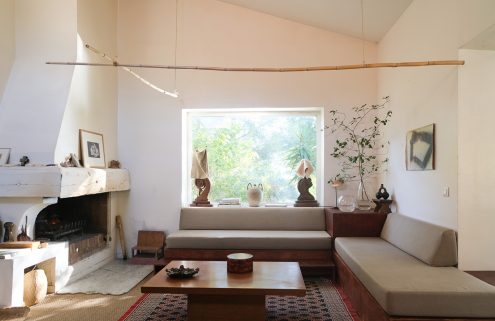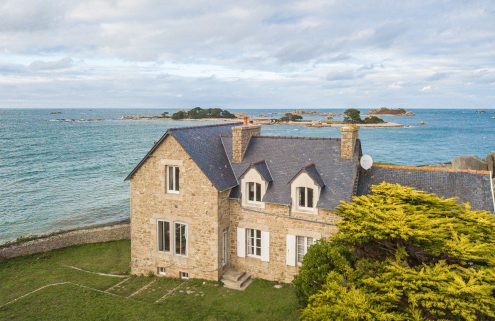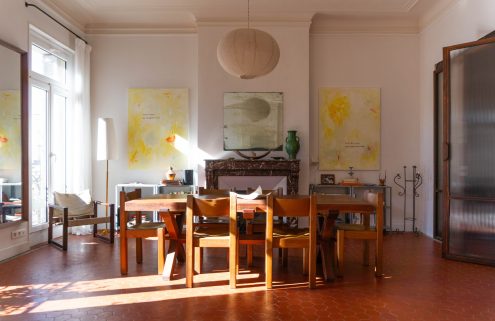Irish designer Eileen Gray is revered as a pioneer of modernism, known for some of the 20th century’s most iconic furniture designs and as the architectural visionary behind the Functionalist landmark E-1027 House in France. Among her lesser-known projects is Tempe à Pailla, which has hit the market for €3.5m.
Gray designed this modernist gem following her split with her lover, Romanian architect Jean Badovici, with whom she had collaborated on E-1027 in nearby Roquebrune-Cap-Martin.
Gray famously said, ‘I like doing things; I hate possessing them. Memories cling to things and objects, so it is best to start all over again.’ Consequently, the designer left furniture, textiles, and objects in place after she moved out of E-1027, having purchased a sunny 1.5-acre plot in nearby Castellar on which to build her new two-storey home.
If E-1027 was a place of experimentation and playfulness, Tempe à Pailla was conceived for healing, with versatile open spaces and a reverence for the surrounding nature, as denoted by its name, which derives from the proverb, ‘Avec le temps et la paille, les nèfles mûrissent’ (‘With straw and time, the medlars ripen’).

Photography: Engel & Völkers

Photography: Engel & Völkers

Photography: Engel & Völkers

Photography: Engel & Völkers
The 1,000 sq ft retreat has a subtle nautical theme, evident in the porthole windows and riveted zinc bathtub, evocative of submarine doors. Boxy, simple living spaces feature large spans of glass—’The future projects light; the past only shadows,’ wrote Gray—creating bright and voluminous interiors with white walls and cool brick floors. A concrete bridge and stairs connect the minimalist property to the garden.
Gray designed a cache of furniture and fixtures for the Riviera property, including sliding shutters, a curved metal wardrobe, a fold-out ironing board, and brick fireplaces with screens. Most notable is the bedroom’s innovative ‘ceiling eye’, an aperture that controls the amount of light streaming into the space.
The designer was forced to abandon the property during World War II as the Nazis invaded and occupied France. When she returned in 1945, she found it ransacked, with furniture looted and sketches destroyed. After a refurbishment, she put the house on the market in 1955, and it was bought by abstract artist Graham Sutherland.
Over the subsequent decades, the British painter and his wife planted a tropical garden and built an entirely new, modernist-style main house, leaving Gray’s compact design intact as the caretaker’s home. The couple lived at the French property until 1979, but it fell into disrepair after their deaths and was eventually bought by their friend, Italian filmmaker Pier Paolo Ruggerini in 1996, who restored the house to its original condition.
Engels & Völkers is listing this unique modernist property for €3.5m. See more at the listing.



























